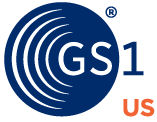Most importantly, inventory management ensures that you can keep your customers safe and that the quality of your product meets regulations and the public’s expectations. When you prioritize inventory management, you can work effectively with retail partners to properly manage potentially unsafe or defective products. When you work with partners in the supply chain using a common standard, such as the UPC barcode, you can isolate affected products, properly manage recalls, keep your customers safe, and retain public trust. In fact, affected UPCs, along with expiration dates, are often cited specifically in notices about product recalls to help the industry and the consumer confirm what is safe and what is not.
If your business revolves around food, inventory management is crucial to food safety. Not only do we regularly hear about outbreaks of foodborne illnesses like E. coli, Salmonella, and listeria, but we also hear about regulations from the Food and Drug Administration (FDA) that are driving forward more proactive food traceability. GS1 barcodes and data standards are beneficial for businesses to meet the requirements of the Food Safety Modernization Act (FSMA). Signed into law in 2011 by the Obama Administration, FSMA is a food traceability rule for fresh food products. It aims to prevent food recalls before they happen by improving traceability. Barcoding and tracking your products keep your customers safe and can often protect your company from serious legal implications and loss of customer loyalty.


